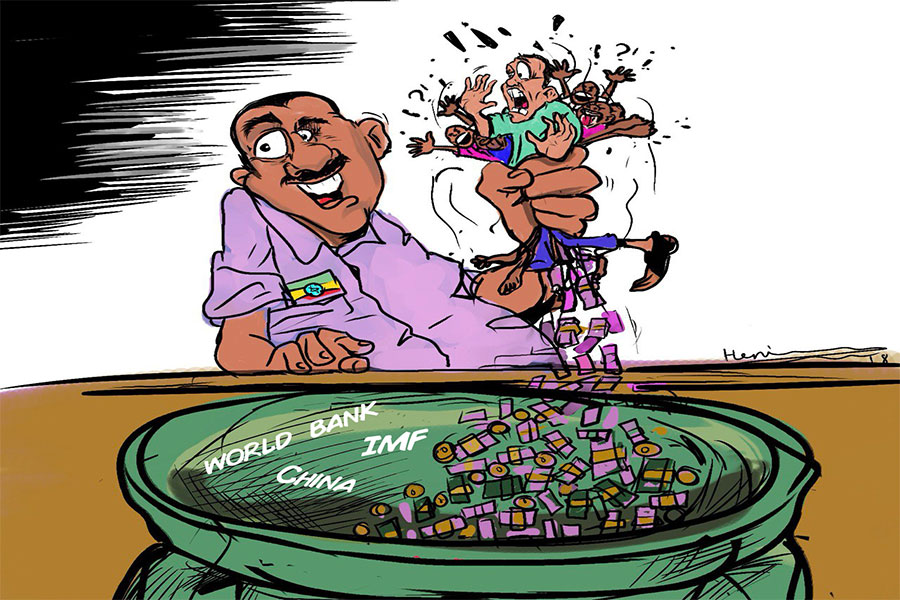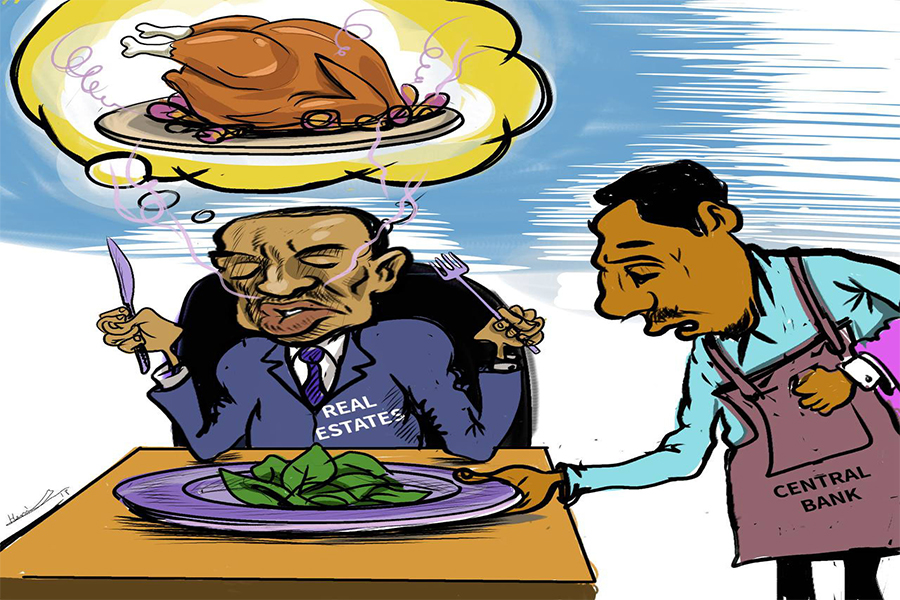
Photo Gallery | 176952 Views | May 06,2019
Mar 2 , 2025.
Monetary authorities moved to show their firepower last week, floating a special foreign exchange auction on February 25, 2025, offering 60 million dollars to commercial banks.
“The auction followed a comprehensive macroeconomic reform program launched in July 2024, which has resulted in steady improvements in the balance of payments,” said the Central Bank in a statement a day before the auction. “Rising exports, remittances, and capital inflows have strengthened foreign exchange reserves, particularly through record-high gold supplies to the NBE.”
Monetary officials credit these inflows with driving up reserves “beyond expectations” but say they want to prevent excessive monetary expansion that could spark inflation. By selling part of their reserves through an auction, they sought to fine-tune liquidity and ensure that some available foreign exchange would reach private-sector hands. Yet, the ensuing depreciation proved the forex market remains under strain, despite the authorities’ efforts to strike a balance between promoting growth and keeping prices stable.
The second auction since August 7, 2024, immediately following the liberalisation of the forex market regime, the latest auction came during a broader effort by policymakers to stabilise the Birr (Brewed Buck). Its value against the Dollar (Green Buck) fell by about 2.1pc over the week, a pace that signalled a growing gap between demand and supply in the foreign exchange market. Close to 27 banks offered bids, and seven purchased 59.2 million dollars. The Central Bank disclosed a weighted average of 135.61 Br for a dollar.
In the days following the auction, the Birr stayed on a downward track against the dollar. From February 24 through March 1, the average buying rate among commercial banks rose from 125.4 Br to 128.1 Br, while the average selling rate climbed from around 127.8 Br to 130.6 Br. These daily shifts could say much about persistent forex demand, which appears to outweigh the supply injection from special auctions and ordinary monetary policy interventions.
The state-owned Commercial Bank of Ethiopia (CBE) stood out as an outlier within that market. It secured 40pc of the 60 million dollars auctioned on February 25, offering 135 Br for a dollar, yet it continued to post the lowest buying rate in its retail window at 124 Br. Analysts say the duality in its posturing showed the Bank’s dominant role in stabilising the foreign exchange market, coupled with a cautionary strategy to manage its liquidity. Despite acquiring a large chunk of dollars, the CBE seems intent on avoiding rapid adjustments to its official postings, perhaps to preserve reserves or meet internal constraints.
Hijira Bank offered the highest buying rate at auction (140 Br), buying two million dollars. Global Bank (Ethiopia) and Oromia International Bank bid 135 Br, acquiring five million and 10 million dollars, respectively. Dashen secured seven million, while Ahadu took 200,000 dollars. However, the difference between auction prices and publicly posted rates remained sizable, alluding that official forex valuations may be suppressed to contain volatility or manage inflation expectations.
The spread between buying and selling rates at most banks was around two percent, but the Central Bank’s spread fluctuated between 1.3pc and 0.53pc on February 25, then reached 1.46pc by March 1. Observers interpret this narrower gap as a subtle move by the monetary authorities to guide market behavior without resorting to abrupt policy shifts. Still, it did little to stop some banks from more aggressively adjusting their rates.
Abay, Addis, and Amhara banks posted steadily climbing forex rates over the past week. Abay, for instance, moved its buying rate from 125.35 Br to 128.08 Br, unveiling an aggressive position on dollar acquisition. Wegagen and Oromia International banks stood out for some of the highest selling rates, each hitting 130.6 Br on March 1. Their moves seemed to meet the real-time market pressures rather than the more measured approach seen at bigger banks like the CBE.
Even with enhanced forex reserves, the Brewed Buck continues to face headwinds. The combination of strong demand for hard currency, limited supply, and cautious official policies has kept the Birr on a weakening path. Policymakers appear determined to rely on targeted auctions to manage liquidity, but the gap between official rates and auction bids signals the difficulty of reconciling policy targets with market realities.
As the Brewed Buck continues to slip, the Central Bank may need to refine its forex strategies further to bridge that divide and maintain a measure of price stability.
PUBLISHED ON
Mar 02, 2025 [ VOL
25 , NO
1296]

Photo Gallery | 176952 Views | May 06,2019

Photo Gallery | 167168 Views | Apr 26,2019

Photo Gallery | 157747 Views | Oct 06,2021

My Opinion | 136938 Views | Aug 14,2021

Oct 18 , 2025
The political establishment, notably the ruling party and its top brass, has become p...

Oct 11 , 2025
Ladislas Farago, a roving Associated Press (AP) correspondent, arrived in Ethiopia in...

Oct 4 , 2025
Eyob Tekalegn (PhD) had been in the Governor's chair for only weeks when, on Septembe...

Sep 27 , 2025
Four years into an experiment with “shock therapy” in education, the national moo...